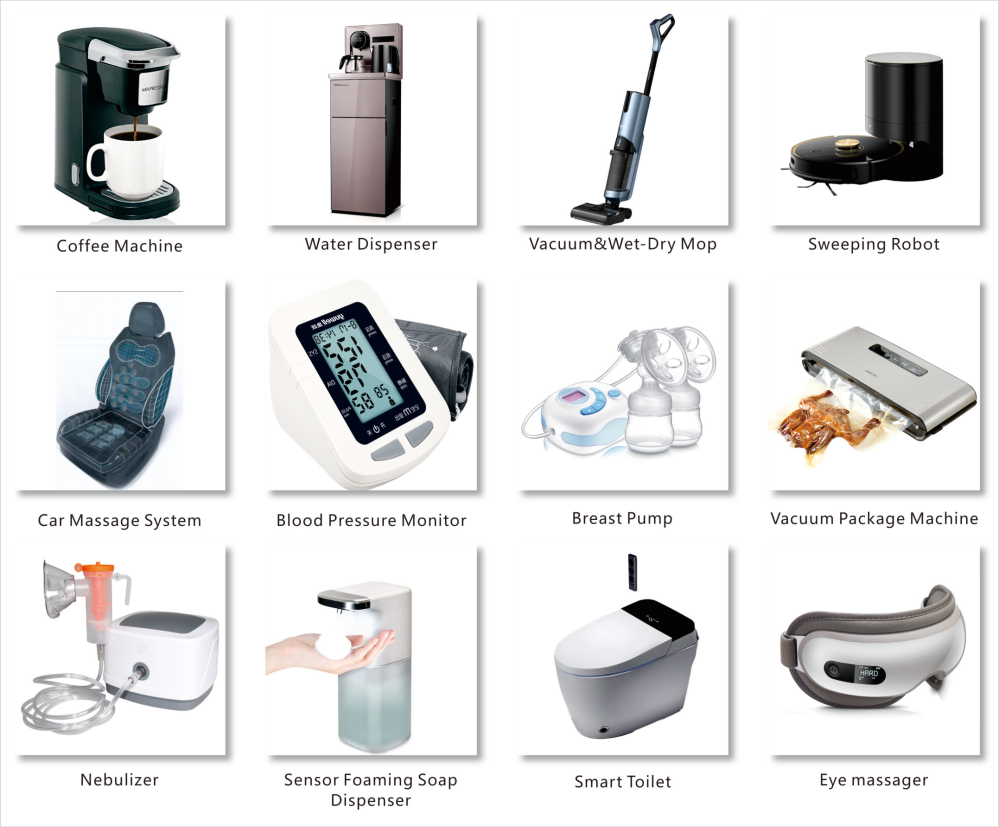Micro DC3.2V High Precision Peristaltic Pump
$4.251000-9999 Others
$3.65≥10000Others
| Payment Type: | L/C,T/T,D/P,D/A,Paypal |
| Incoterm: | FOB,CIF,EXW,FAS,FCA,DDP,DDU,Express Delivery |
| Transportation: | Ocean,Land,Air,Express |
| Port: | Shenzhen,Shanghai,Ningbo |
$4.251000-9999 Others
$3.65≥10000Others
| Payment Type: | L/C,T/T,D/P,D/A,Paypal |
| Incoterm: | FOB,CIF,EXW,FAS,FCA,DDP,DDU,Express Delivery |
| Transportation: | Ocean,Land,Air,Express |
| Port: | Shenzhen,Shanghai,Ningbo |
Model No.: DRB320A-01
Brand: DYX
Lifetime: >60,000 cycles
Net Weight: 60g
MOQ: 1000pcs
OEM/ODM: Available
Voltage: DC12V
Power: 2.4W
Flow: 70-130ML/MIN
Media: Water,air
Noise: <60db
Temperature: 5-90℃
| Selling Units | : | Others |
| Package Type | : | Standard carton |
Introduction:
In various industries and applications, the need for compact and efficient pumping solutions has led to the development of Mini Diaphragm Pumps and mini peristaltic pumps. While both serve similar purposes, they differ in terms of operation, design, and applications. This article aims to shed light on the key differences between mini Diaphragm Pumps and mini peristaltic pumps, helping readers make informed decisions when selecting the appropriate pump for their specific requirements.
1. Operation:
Mini Diaphragm Pump: A mini diaphragm pump utilizes a flexible diaphragm to create a reciprocating motion that generates suction and discharge. The diaphragm separates the liquid from the pumping mechanism, preventing contamination and ensuring efficient pumping.
Mini Peristaltic Pump: A mini Peristaltic Pump operates by squeezing a flexible tube or hose with rollers or shoes. This action creates a positive displacement, pushing the liquid through the tube while maintaining a sealed flow path. Peristaltic pumps are known for their gentle pumping action, making them suitable for delicate fluids or shear-sensitive applications.
2. Design:
Mini Diaphragm Pump: Diaphragm pumps typically consist of a housing, diaphragm, valves, and an actuating mechanism. They are available in single or double diaphragm configurations. The housing materials can vary, including metals, plastics, or elastomers, depending on the application requirements.
Mini Peristaltic Pump: Peristaltic pumps are designed with a tube or hose, rollers, and a motor. The tube material is selected based on the fluid being pumped, ensuring compatibility and preventing chemical reactions. The rollers compress the tube, creating a positive displacement that propels the fluid forward.
3. Applications:
Mini Diaphragm Pump: Diaphragm pumps are commonly used in applications requiring high pressure, such as medical devices, laboratory equipment, inkjet printing, and chemical dosing. They are suitable for pumping liquids with low to medium viscosity and can handle abrasive or corrosive fluids.
DC Peristaltic Pump: Peristaltic pumps find applications in fields like pharmaceuticals, food and beverage, biotechnology, and analytical instruments. Their gentle pumping action makes them ideal for pumping shear-sensitive fluids, viscous substances, and those containing particulate matter. Peristaltic pumps are also widely used in medical devices, where precise and controlled fluid delivery is critical.
4. Advantages and Limitations:
Mini Diaphragm Pump:
- Advantages: High-pressure capabilities, self-priming, suitable for abrasive and corrosive fluids.
- Limitations: Limited flow rates, can be noisy, may require periodic maintenance.
Small Peristaltic Pump:
- Advantages: Gentle pumping action, precise and controlled fluid delivery, suitable for shear-sensitive and viscous fluids.
- Limitations: Limited pressure capabilities, lower flow rates compared to diaphragm pumps, tube replacement required periodically.
Conclusion:
Choosing between a mini diaphragm pump and a mini peristaltic pump depends on the specific requirements of the application. Diaphragm pumps are favored for their high-pressure capabilities and ability to handle abrasive or corrosive fluids. Peristaltic pumps, on the other hand, excel in gentle pumping, making them suitable for shear-sensitive or viscous fluids. By understanding the operational principles, design features, and application suitability of each pump, users can make informed decisions to meet their pumping needs effectively.
Technical Specification
Product model
DRB320A-01
Rated voltage
DC12.0V
Diameter
φ21.8×52.8mm
Rated power
<2.4W
Suction value
≦-20KPA
Flow rate
70-130ML/MIN
Noise Level
<60db@30cm
Life Test
>500H(1s on, 1s off)
Product use
Mainly used for intelligent sweeper, high-end water dispenser,handwash machine, cosmetics machine, fragrance machine, etc
Dimension Drawing

| Pump&Valve Application |

The minimum flow rate of the peristaltic pump may be milliliters per minute. Different models of peristaltic pumps may have different minimum flow rates, and some peristaltic pumps may have a higher minimum flow rate small. If you need more specific values, you may need to consult the relevant peristaltic pump manual or contact the manufacturer of the peristaltic pump.


Privacy statement: Your privacy is very important to Us. Our company promises not to disclose your personal information to any external company with out your explicit permission.

Fill in more information so that we can get in touch with you faster
Privacy statement: Your privacy is very important to Us. Our company promises not to disclose your personal information to any external company with out your explicit permission.